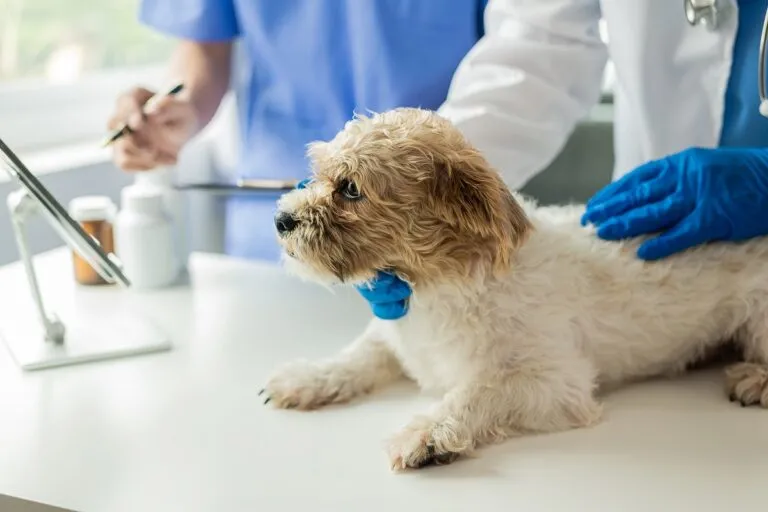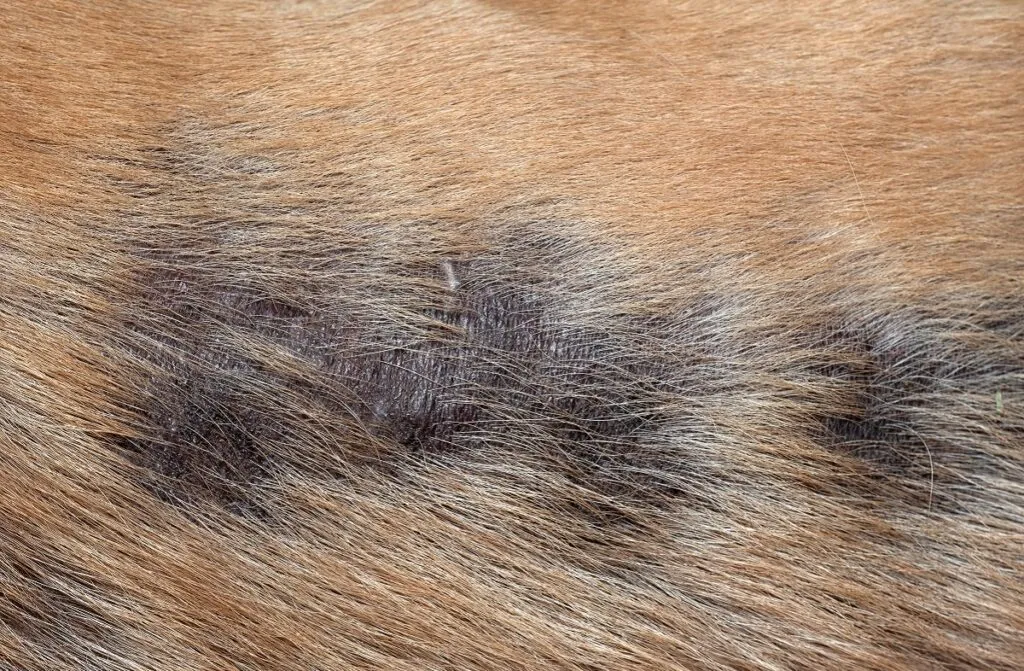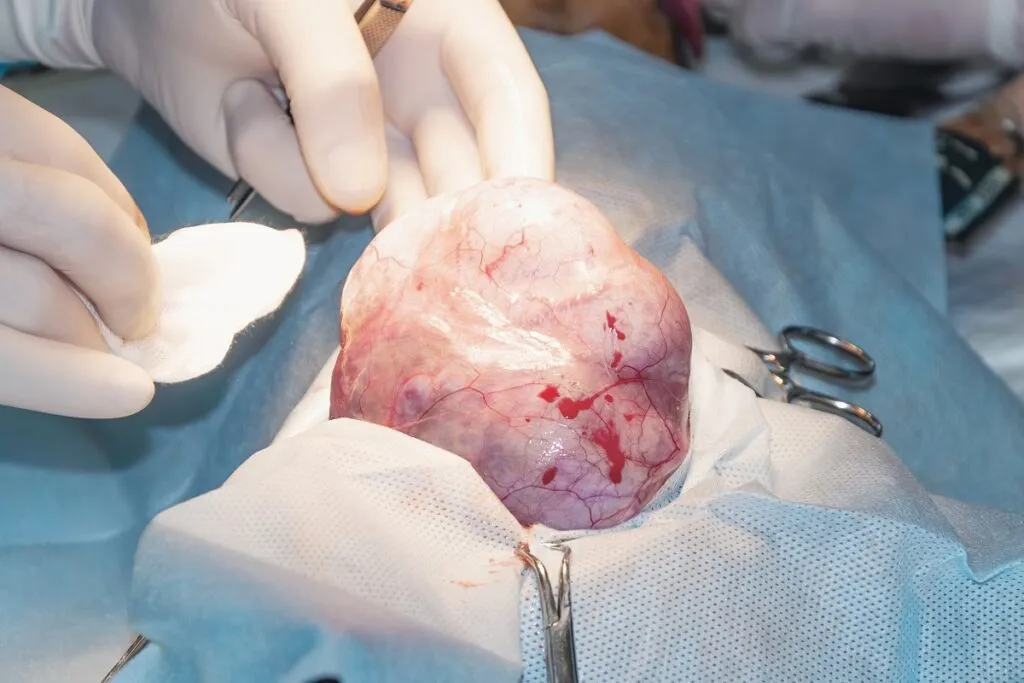The treatment of choice is surgical castration, where the vet removes both testicles, including the scrotum, depending on the type of tumour. If your dog is cryptorchid, the testicular tumour in the abdomen can be removed laparoscopically.
If you wish to preserve your male dog’s fertility, depending on the findings, it may be possible to retain a healthy testicle.
Does Testicular Cancer in Dogs Spread?
Testicular tumours usually develop localised and tend to displace the surrounding tissue in the testicle, but they show little tendency to metastasise to other organs.
On the treatment of metastasising testicular tumours in dogs, there have been few published studies. However, radiation therapy has led to the regression of the tumour in some dogs.
According to studies, chemotherapy (for example, with cisplatin or thalidomide and cyclophosphamide) can also bring temporary improvement.
Prognosis: Is Testicular Cancer in Dogs Curable?
Your dog’s prognosis depends heavily on the type of cancer, whether the tumour is hormonally active, and whether it has already formed metastases.
Leydig cell tumours are almost always benign. Seminomas or Sertoli cell tumours are benign in over 80 percent of cases. However, there are also malignant testicular tumours, which worsen the prognosis. These include especially metastasising inguinal and lumbar lymph nodes.
Note: If your dog suffers from severe aplastic anaemia (anemia), due to high estrogen production, unfortunately, the prognosis is poor.


